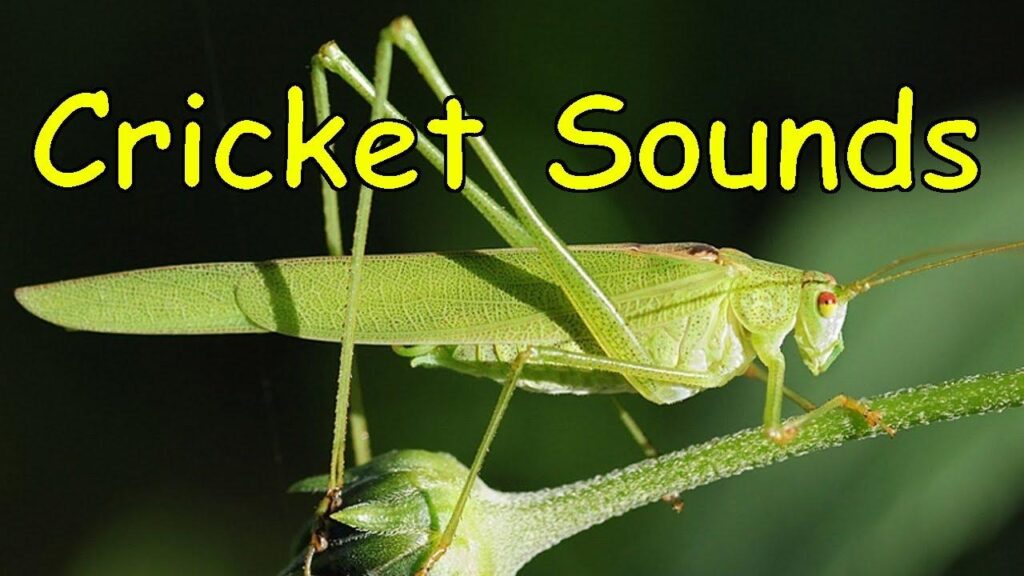- Advertisement -
In a fascinating blend of nature and science, The Old Farmer’s Almanac has revisited a charming yet practical folk tradition: estimating temperature through cricket chirps. For decades, curious observers have noted that the frequency of cricket chirps can serve as a natural thermometer, correlating with ambient temperature in both Fahrenheit and Celsius scales. This time-honored method, often passed down through generations, is now being examined with renewed interest as an accessible way to gauge weather conditions using just the sounds of nature. In this article, we delve into the mechanics behind the cricket code, exploring how these tiny insects offer an audible gauge to the mercury’s rise and fall.
Understanding the Science Behind Cricket Chirps and Temperature
Crickets are not just summer’s background musicians; they are natural thermometers producing chirps that directly correlate with temperature fluctuations. This fascinating phenomenon occurs because a cricket’s chirping rate increases as the temperature rises. The biological mechanics behind this rely on a process called stridulation, where crickets rub their wings together. The speed of this rubbing, and thus the chirps, accelerates with warmth due to increased muscle activity, providing a reliable acoustic measure of ambient temperature.
Several formulas have been developed to translate cricket chirps into temperature readings, most famously Dolbear’s Law. For practical use, here’s a simple guide to estimate the temperature in both Fahrenheit and Celsius by counting the number of chirps in 15 seconds:
| Number of Chirps (15 sec) | Temperature (┬░F) | Temperature (┬░C) |
|---|---|---|
| 20 | 65┬░F | 18┬░C |
| 30 | 75┬░F | 24┬░C |
| 40 | 85┬░F | 29┬░C |
- Accuracy: While not precise, the chirp method provides quick, nature-based estimates.
- Species Variation: Different cricket species chirp differently, affecting calculations.
- Environmental Factors: Humidity and wind may also influence chirp frequency.
How to Accurately Count Chirps for Reliable Weather Predictions
To achieve precise weather predictions from cricket chirps, the key lies in consistent and attentive listening. First, focus on the chirps produced over a span of exactly 15 seconds rather than counting hurriedly or for an arbitrary time frame. This standardized interval drastically reduces error margins in calculations. Find a quiet spot at dusk or dawn when crickets are most active and the ambient noise is minimal. Use a stopwatch or timer on your phone to mark your count accurately, and repeat the process several times to average out any anomalies caused by distractions or other insect sounds.
It’s also important to identify the species of cricket you’re hearing, as different ones chirp at varying rates and temperatures. The common field cricket works best for the traditional counting method linked to temperature forecasting. Below is a quick reference table illustrating how chirp counts in 15 seconds correlate with temperature conversions for both Fahrenheit and Celsius:
| Chirps per 15 Seconds | Temperature (┬░F) | Temperature (┬░C) |
|---|---|---|
| 15 | 65 | 18 |
| 20 | 70 | 21 |
| 25 | 75 | 24 |
| 30 | 80 | 27 |
- Avoid counting in windy or rainy conditions as these factors affect cricket activity.
- Use headphones or directional microphones if possible for enhanced clarity.
- Record multiple samples in the same area to improve accuracy.
Practical Tips for Using Cricket Chirps to Forecast Weather in Fahrenheit and Celsius
To harness the subtle wisdom of cricket chirps in predicting temperature, start by finding a quiet outdoor spot during twilight or nighttime when crickets are most active. Count the number of chirps produced in 15 seconds, then apply the classic cricket formula for Ō¼ż Fahrenheit: Number of chirps + 40. For Celsius, you can convert that result by subtracting 32 and multiplying by 5/9, or use a direct method by adding 30 to the chirp count and dividing by 7. This natural thermometer offers a remarkable shortcut for outdoor enthusiasts keen to gauge the night’s chill or warmth without gadgets.
Keep in mind that variations exist among cricket species and environments, so consistency in measuring time intervals is key. Additionally, factors like humidity and location may affect chirp rates slightly. For quick reference, use the chart below tailored to the popular snowy tree cricket, known for its reliable chirp-temperature correlation:
| Chirps in 15 Sec | Temp (┬░F) | Temp (┬░C) |
|---|---|---|
| 20 | 60 | 16 |
| 25 | 65 | 18 |
| 30 | 70 | 21 |
| 35 | 75 | 24 |
| 40 | 80 | 27 |
- Tip #1: Always count chirps for a full 15 seconds to ensure accuracy.
- Tip #2: Use this method primarily in warm seasons when crickets are most vocal.
- Tip #3: Repeat measurements in different spots to verify consistency.
Key Takeaways
As the warm months bring the familiar chorus of crickets, understanding their chirps offers more than just a pleasant soundtrack-it provides a natural, accessible way to gauge the temperature. From the traditional wisdom shared in The Old Farmer’s Almanac to modern scientific insights, decoding cricket chirps bridges folklore and fact, reminding us of the subtle signals nature provides daily. Whether you’re an outdoor enthusiast, a curious homeowner, or simply a fan of the natural world, listening to the cricket’s rhythmic song could reveal more than you ever expected-offering a charming and practical key to the day’s weather in both Fahrenheit and Celsius.
- Advertisement -


